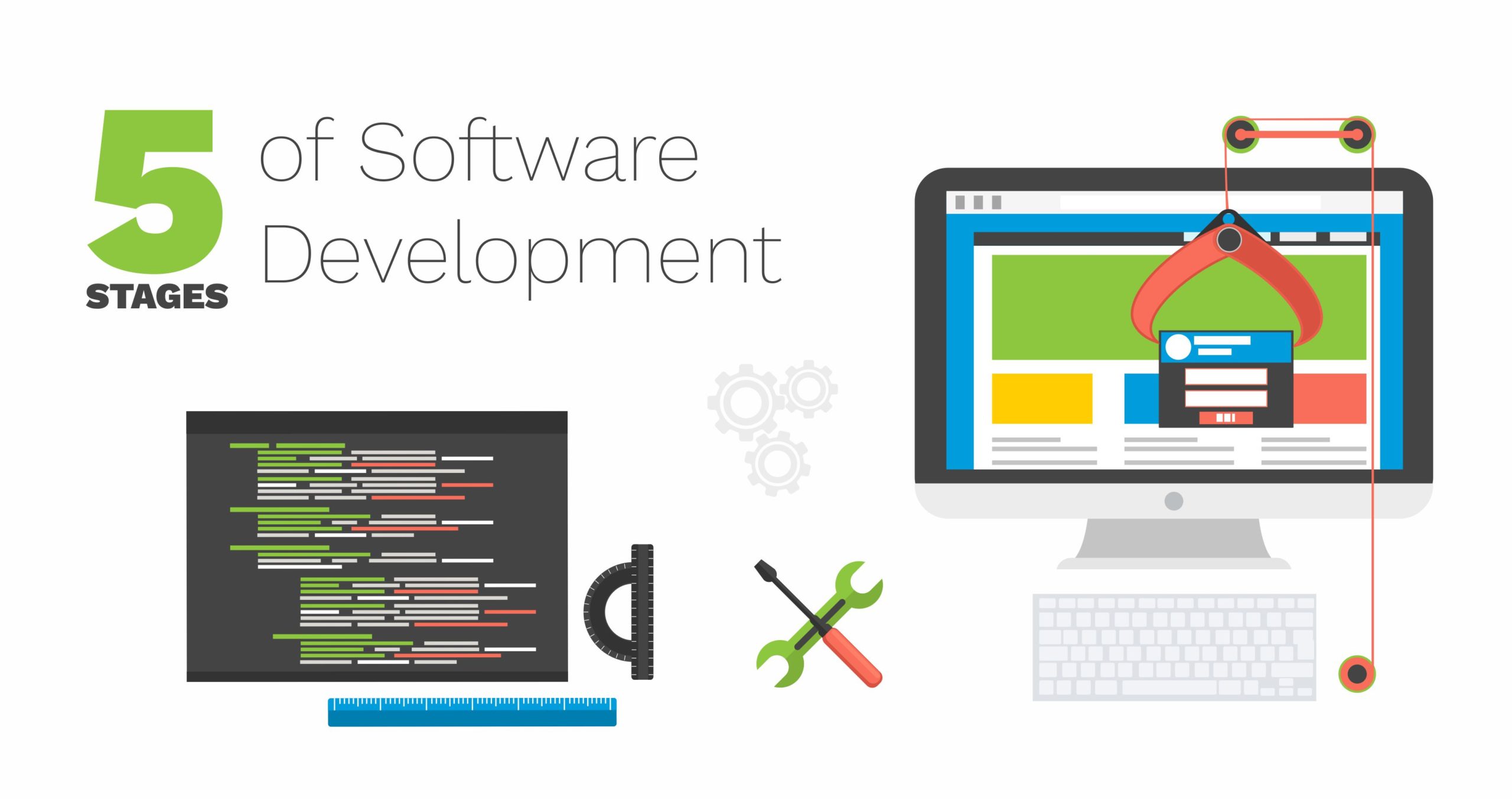The 5 Stages of Software Development (2019 Update)

Undergoing a custom software build can be daunting for almost any organization – and even more so if you don’t have a technical background or aren’t completely familiar with the stages of software development.
The good news is that you don’t necessarily need to sit down and learn how to develop software just because you’ve started a software development project. (That’s what you hire experts for!)
However, you should have an idea of the process so you know the stages of software development as you move through them throughout the project. This way, you can manage expectations (including your own) and spot the red flags of each stage immediately.
While every project is unique, the development process is always the same for every client we work with. Every custom software project at RTS Labs is a partnership between our development team and our client. When you get familiar with these five stages of software development, you’ll feel less intimidated about taking on that custom software project you know you need.
Software development stage 1: Analysis
A common misconception among business owners is that the most important stage of software development involves the design and the code. Yes, good design and solid code are both extremely important. However, they do zero good if the software doesn’t suit your business needs.
In our minds, the analysis stage is the most crucial step in software development. The RTS Labs teams focus on this stage a lot, so we can get it right the first time. Beyond building something that is beautifully designed, user-friendly, and bug free, you need a tool that will actually produce a return on your investment.
During this crucial software development stage, we spend time learning your business processes, pain points, challenges, technical ecosystem and goals. Once that information is gathered, we validate goals and present you with a scope of work.
What are some warning signs that this first stage isn’t being executed properly?
Stage 1 red flags:
- Not much is done to understand your business or its processes (or as we say, the discovery process is non-existent).
- No validation is done to ensure that what you want to build actually solves the problem you’re trying to address.
- Your developer doesn’t present you with a scope of work.
To learn more about this first stage, check out, “You Needed a Data Roadmap, Like, Yesterday” for more on the importance of developing a data roadmap.
Stage 2: Design
Once you validate your need for custom software, set your goals and outcomes, and agreed upon the scope of work with your development team, it’s time to get into the nitty-gritty of design.
In the design phase, you and the development team determine what your software needs, how it will look, and what the timeline for development is going to be. It’s time to map out workflows, determine what database(s) will be used, and create a data model. This work will set up a nice foundation for the stages of software development that you have yet to work through.
Stage 2 red flags:
- The developers (whether in-house or agency) promise too much in too little time.
- Your team or the project champion isn’t engaged to make design decisions.
- There’s no communication plan in place.
Stage 3: Coding
Once you have all your requirements and designs documented and mapped out, it’s time to start the code writing. Notice that coding doesn’t come until step three in the stages of software development.
There’s a lot of planning involved before the first line of code is written. During this phase, development tasks will be broken down so the project can be built in pieces. Going piece by piece allows for time to review and hold feedback sessions to make sure that development is on the right track.
The way the process works at RTS Labs is we start small and build iteratively. As our founder Jyot likes to say, “We start with a small ship, make sure it floats, and then build a bigger ship from that.”
While your ship is being built (or coded, as it were), there should be constant communication about your project’s progress. The communication channels that have worked best with our clients over the years are progress meetings, tracking tools, and phone calls.
Stage 3 red flags:
- There are no tracking tools in place for you to check on progress.
- There is little or no consistent communication throughout the different software development stages.
Additional reading:
More about the basics of the iterative model
In-depth details, history, and best practices of the iterative model from an agile perspective
Stage 4: Testing
In the early days of RTS Labs, working with clients taught us that software development goes better and you get a stronger product when you test and develop iteratively so that problems are found during the build. That way, when problems are found (and there are always a few), we can fix it sooner rather than later and it doesn’t have a negative effect on the other stages of software development.
There’s also a final testing phase before the software is implemented. In this stage, we bring in a group of users to test the product and give us feedback. User testing is important because it helps uncover issues that may not be obvious to our developers.
Stage 4 red flags:
- Your team is not involved in testing and/or there is no testing phase.
- Testing is an afterthought and is not done until the very end.
Stage 5: Implementation
Finally, it’s time to release your shiny new custom software to the world! This stage of software development isn’t done with the push of a button. It’s done step by step with an implementation plan.
First, your employees need to be taught how to use it and support it. Next, the new software is released to all users (internal users, customers, partners, whomever your users may be).
Once the software has been implemented, make sure your development team (whether internal or external) is available to you in the event that something isn’t working the way you were expecting it to or you need additional support. You don’t want a team that builds and runs. The stages of software development aren’t complete until we make sure you are successfully using the custom software we built for you and with you.
Stage 5 red flags:
- There’s nothing in your scope of work document to cover support after implementation.
- There’s no training once the software is built.
After the main build: Maintenance
Just because all the stages of software development have been completed doesn’t mean the process is over. You need a plan for maintaining that software to ensure your data is properly governed, user training is completed as needed, and the software remains updated. Talk with your technology partner about creating a maintenance plan to ensure your software stays secure and up to date.
As a client, you should be involved in the entire process. In no scenario should you have a couple of initial meetings and then never speak to your developer again. Building custom software is a process that requires partnership and planning. These are the steps that get you from idea phase to completed product to release and maintenance.
Want to know more about custom software development? Wondering if building is the right decision? Download our in-depth whitepaper on what it takes to develop custom software and who should consider a custom software solution.
